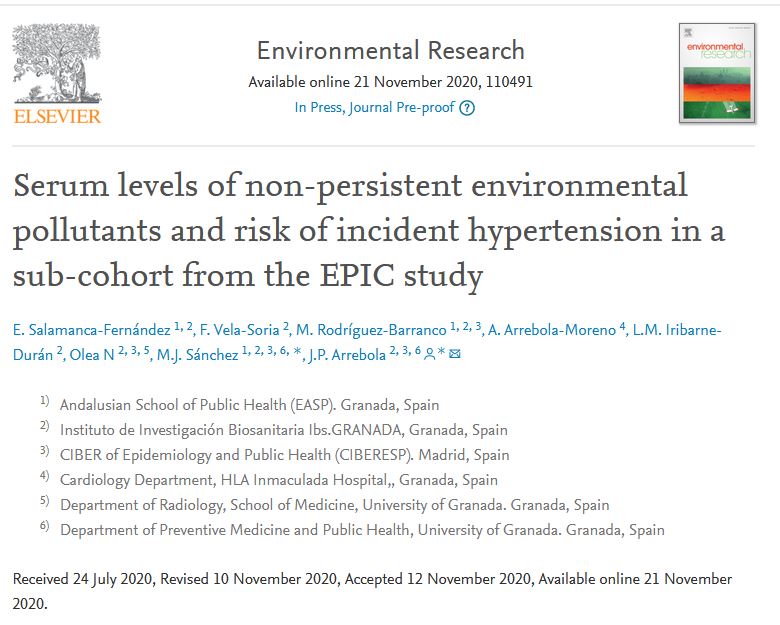
Background
The prevalence of arterial hypertension (AHT), a well-known risk factor for cardiovascular disease, has considerably increased over last decades. Non-persistent environmental pollutants (npEPs) are a group of ubiquitous chemicals, widely used in consumer products such as food packaging and cosmetics, which have been identified as endocrine disrupting chemicals and obesogens. The aim of this study was to assess the potential associations of serum levels of three groups of npEPs with the risk of incident AHT.
Methods
We designed a cohort study in a sub-cohort of Granada EPIC-Spain centre (n=670). We quantified serum concentrations of three groups of npEPs, i.e., bisphenol A (BPA), four parabens: methylparaben (MP), ethylparaben (EP), propylparaben (PP) and butylparaben (BP), and two benzophenones: benzophenone 1 (BP1), benzophenone 3 (BP3), in samples extracted at recruitment. Statistical analyses were performed by means of Cox Proportional Hazard Models.
Results
Median follow-up time was 23 years. BPA and MP were found in >80% of the study population. Individuals within the 4th PP quartile (0.53-9.24 ng/ml) showed a statistically significant increased risk of AHT (HR=1.40, p=0.015). No associations were found for the rest of pollutants.
Conclusions
Overall, we evidenced no associations of most npEPs with AHT risk, with the exception of an increased risk in the highest PP percentiles. Considering the limitations of using one spot urine sample for exposure characterization, further research on the potential contribution of npEPs on the development of AHT risk is warranted.


